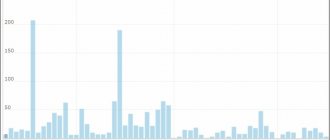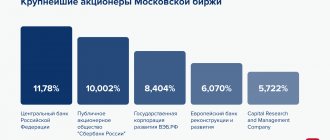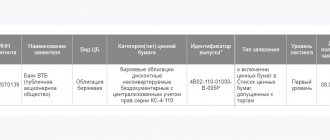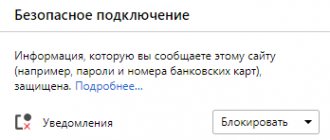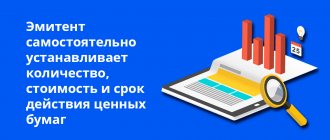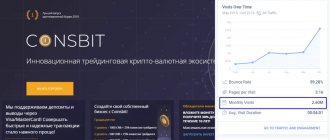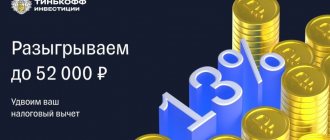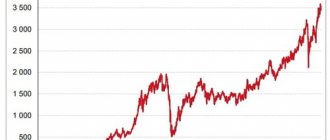Exchange trading in Russia began to develop rapidly just over 20 years ago. For comparison, American trading platforms at this point have a history that amounts to hundreds of years. Therefore, our market can be called still very young, however, this does not in any way affect the quality of service, characteristics and technical equipment. In all these parameters, the Moscow Exchange (moex com), as the most famous and largest of the Russian ones, is in no way inferior to its Western counterparts.
Moreover, the interest of foreign participants in Russian companies is growing every year, increasing the influx of funds, and the state has developed a special incentive program for citizens of the country. From this article you will learn:
- Moscow Exchange: history and modern appearance
- Moscow trading session
- Bidders
- Trading instruments of the Moscow Exchange
- Trading Process
- Advantages and disadvantages of the Moscow Exchange
- Conclusion
History of the creation of Moscow Exchange
I will not delve into pre-revolutionary history. It is enough to know that in our country they learned what a stock exchange is not in the 90s of the 20th century, but much earlier. Then came many years of oblivion of market principles of economic management. The break has led to the fact that today we are practically learning them all over again. Hence the low financial literacy of the population, the negligible proportion of those who think about their pension in advance, and the too large proportion of people who rely on the state in this matter.
I'll start with the modern era of the development of stock trading. History of creation in several key dates:
- In 1992, the MICEX (Moscow Interbank Currency Exchange) was established. From the name it is clear that they were mainly engaged in currency transactions. Later, trading in securities began.
- Since 1995, the derivatives market began to develop, where operations with derivatives (derivative financial instruments) were carried out.
- In 2003, there was active trading in mutual fund units.
- In parallel, the MICEX developed along its own path another Russian exchange - the RTS (Russian Trading System), on which shares of Russian enterprises were traded in US dollars.
- In 2011, the MICEX and RTS merged into a single structure - the Moscow Exchange. There are two active indices left from previous times: the Moscow Exchange index and the RTS index. They include shares of Russian companies in rubles and US dollars, respectively.
Complete information about current strategies that have already brought millions of passive income to investors
Today, the Moscow Exchange is a modern, market mechanism for trading all known investment instruments: stocks, bonds, futures, options, currencies, etc. Any Russian can participate in this process and create his own capital, which will ensure not only his future, but also the future of his children. The sooner we understand that the most ordinary person can do this, the sooner we will gain financial freedom. I sincerely wish this for all our citizens.
Which exchange is the main one in the Russian Federation?
The leader in terms of trading volumes on the Russian stock market is the Moscow Exchange MICEX RTS. It works with all exchange instruments. The system serves 6 markets: stock, futures, foreign exchange, money, commodities, over-the-counter.
The main trading platform for foreign investment in shares of Russian companies is the Main Market sector of the exchange. It carries out 80% of stock trading and more than 99% of bond trading.
Structure and participants
The structure of the Moscow Exchange group includes:
- The stock market is a place for carrying out transactions for the purchase and sale of shares, bonds (federal loans, corporate, regional and Eurobonds), depository receipts, investment shares, mortgage certificates, shares of exchange-traded index funds.
- Derivatives market – derivatives trading (futures, options).
- Foreign exchange market - works with currencies of different countries: US dollar, euro, yuan, pound sterling, Ukrainian hryvnia, Hong Kong dollar, Belarusian ruble and Kazakh tenge.
- Money market – REPO transactions (purchase/sale of securities with the simultaneous conclusion of an agreement on a reverse transaction at a pre-agreed price), deposit and credit operations from the organizers: the Central Bank, the Pension Fund, etc.
- The commodity market on the basis of the National Commodity Exchange conducts trading in grain, sugar, gold, and silver in the delivery mode.
- NSD (National Settlement Depository) maintains records of securities owners.
- The National Clearing Center is an intermediary between the seller and the buyer, which guarantees the timeliness and completeness of settlements.
More than 100 cool lessons, tests and exercises for brain development
Start developing
Moscow Exchange offers a large volume of information services (subscription to exchange information) and technological solutions. For a novice investor, the official website has a lot of useful information. But I wrote about this in a separate section of the article.
Main participants of the Moscow Exchange:
- The national clearing center is a special body that acts as a guarantor of the transaction between the seller and the buyer. He checks the correctness of compliance with the payment terms and takes on the risks of operations. The parties to the transaction can be sure that one of them will receive money, the other - assets.
- The National Settlement Depository is a body independent from brokers that stores records of securities transactions. If a brokerage organization goes bankrupt, the investor will not lose his assets, because information about them is in the depository.
- Exchange clients are the largest group of participants, which includes legal entities that have licenses and are allowed to participate in trading directly, as well as individuals and legal entities that can become clients of participants with licenses and participate in trading through them. Private investors are among the latter. To gain access to the exchange, we must first choose a professional intermediary - a broker or management company.
Some useful links:
- List of trading participants by sections where they have the right to trade.
- List of participants in trading on the stock market.
Deferred execution
When trading on the stock market, you should take into account such an important detail as delayed execution of transactions. Thus, the purchase and sale of shares occurs in the T+2 mode. In this case, “T” means the moment of the transaction. In other words, when concluding a transaction to purchase shares, the buyer will receive them only after 2 days.
The advantage of deferred execution is that you do not have to have the entire amount needed to purchase the shares to complete the trade. The buyer's account can only contain mandatory collateral. This gives you extra time to top up your account.
How the auction works
Exchange opening hours (MSK):
- from 9:30 to 23:50 – stock market;
- from 10:00 to 23:50 – derivatives, foreign exchange, commodity markets.
The exchange website has a trading calendar in which it is convenient to view days when trading is not held (weekends and holidays).
The investor must understand the trading modes:
- T+0 means that the transfer of rights to assets and all settlements occur on the day of the transaction. Applies to shares of Russian and foreign issuers during the evening trading session.
- T+1 means that the transfer of rights to assets and all payments occur the next day after the actual transaction. Applies to bonds, including OFZ, with settlements in rubles and yuan.
- T+2 means that the transfer of rights to assets and all payments occur 2 days after the actual transaction. The most common on the stock exchange, it is used for shares of Russian and foreign issuers with settlements in rubles, bonds in US dollars and euros, mutual fund shares, and ETF shares.
Trading on the exchange takes place according to the following schedule (MSK):
- 9:50–9:59 – opening auction. The price for each asset is determined.
- 10:00–18:39 – trading period.
- 18:40–18:50 – closing auction. The price for each asset is determined.
This schedule applies to shares of Russian issuers in rubles, bonds in US dollars, euros, rubles and yuan. There is no closing auction for shares of foreign companies with settlements in rubles.
The evening trading session is held without a closing auction:
- 19:00–19:04 – opening auction.
- 19:05–23:50 – trading period.
For now, only shares of Russian issuers (not all) are admitted to the evening session.
Partial provision
The term partial collateral on the exchange usually means the use of leverage. For example, if an investor does not have enough funds to purchase shares (or another asset), the exchange may issue the missing portion. However, by using such a service, the investor agrees to comply with the rules. Thus, if there is a risk of losing the credit amount, the exchange may take back the shares.
The main thing to remember is that high leverage allows you to increase your deposit faster, but losing money also happens faster.
Where to start trading on the stock exchange
Let's figure out how a beginner can start trading on the stock exchange. I have identified 2 stages here:
- Understanding what exactly you want to trade. In accordance with this, study the platforms for the purchase and sale of the selected instrument (trading features, list of assets, operating hours, tariffs, etc.).
- Selecting an intermediary who will provide access to the selected site and opening a brokerage account.
Selection of trading section and investment instruments
The majority of investors focus on the stock market. It is there that they can buy shares of Russian and foreign companies, bonds, Eurobonds, and exchange-traded index funds. All brokers automatically provide access to the Moscow Exchange stock market.
To get complete information about assets traded on the exchange, follow the link. An exhaustive list of securities is given, indicating the issuer, type of security and the number of the assigned listing level.
For those who are focused on trading futures and options, it is necessary to gain access to the derivatives market. Let me remind you that transactions with currency are carried out on the foreign exchange market.
Choosing a broker and opening a brokerage account
The next stage is choosing a broker and opening a brokerage account. In my practice of opening accounts with three different intermediaries, I always use certain criteria.
- Availability of a license
It is more convenient to check it on the website of the Central Bank, because it is he who issues permission for financial activities. On the website you need to find the “Registers” section and download the “List of Brokers”.
- Moscow Exchange rating
I often skip point 1, because I immediately look at the list of accredited brokers on the Moscow Exchange. Without a license, no one will simply get into it. What’s interesting to me is not the list itself, but the ranking. The exchange compiles it monthly according to various criteria: the number of clients, including active ones, the volume of transactions, the number of open IIS. Top 25 is the optimal list for choosing a reliable broker. You can view ratings on the stock market by following this link.
- Rates
The most difficult selection stage. You will have to find and read multi-page documents on the official websites of brokers to determine commissions. If there is an office in your city, I recommend seeking advice there in order to immediately ask specific questions, rather than reading a lot of unnecessary information.
I advise you to take the issue of tariffs seriously. They differ significantly from one broker to another. With small investment amounts, there is a high probability that you will give most of the income to the intermediary. This is exactly the experience I had when I opened my first IIS. A year later I had to transfer it to another broker precisely because of the high commissions.
- Terms of Service
Here you need to pay attention to the possibility of opening an account online, the convenience of the mobile application or the computer version of the trading platform, the conditions for depositing and withdrawing money.
You can open an account directly on the website or at the broker's office. The Moscow Exchange, through its MarketPlace, allows you to open a regular brokerage account and IIS in 10–15 minutes without leaving your home, but the choice of intermediaries is still limited.
Brief history of appearance in Russia
The history of the emergence of stock exchanges in Russia dates back to the reign of Peter the Great. By his decree, in 1703, the first stock exchange was created in St. Petersburg, which was an analogue of the Amsterdam one. In 1705, a building was built for it on the spit of Vasilyevsky Island.
Trading sessions were carried out in accordance with the established schedule. Initially, the basis of turnover was goods. With the advent of shares and bonds in Russia, stock transactions began to be carried out.
At the beginning of the 19th century, the number of exchanges in Russia began to grow. They appeared in Moscow (1837), Novgorod, Rybinsk and other cities. A significant impetus for the development of the stock market was the abolition of serfdom in 1861. The increase in the number of joint-stock companies contributed to an increase in trading volume.
The bodies regulating the activities of Russian stock exchanges were the exchange committee and the general meeting. The main task of the latter was the selection of new members, which was carried out once a year. The Exchange Committee was the executive body of the general meeting. He was responsible for monitoring compliance with discipline during stock exchange meetings and handling disputes. His duties included reporting information about violations of the law to the relevant authorities.
The time of the Russian stock exchange is considered to be the periods from 1908 to 1916, from 1988 to 1992. Now there are 6 large stock exchanges operating in the country.
How can you make money on Moscow Exchange
This section will not talk about how to buy securities and make money on it. Separate materials on our blog are devoted to this topic. I would like to touch on another opportunity to make a profit with the help of the Moscow Exchange - buying its shares for dividends.
In 2013, the exchange launched an IPO with a placement volume of 15 billion rubles. This means that any private investor can buy its shares and receive dividends. Securities are traded under the ticker MOEX - this is the trading code in the terminal. The website contains all the necessary information on the issuer’s dividend policy:
- the latest edition of the document is 2022;
- the target level of the share of profits allocated for the payment of dividends is determined as the value of free cash flow to equity capital;
- the minimum share of profit that can be used to pay dividends is 60% of net profit under IFRS.
The main owners of the Moscow Exchange are:
To become one of the company's shareholders, it is enough to buy its shares, which are freely traded on the stock exchange. Current cost (as of September 17, 2020) – 148.87 rubles. The company has a fairly high dividend stability index of 0.57. Payment statistics confirm this:
The current dividend yield is 7.26%, which is significantly higher than bank deposits. Since February 2013, stock quotes have increased 2.76 times (from 53.89 to 148.74 rubles as of September 17, 2020).
Moscow Exchange receives its main income from two sources:
- Commissions from bidders. The value of the indicator depends on the trading volume, the amount of transactions and the size of the commission.
- Placing client balances at interest.
The exchange's income is growing every year, therefore, taking into account the payment of stable and high dividends, the purchase of MOEX shares can be considered as a long-term investment in your portfolio.
Advantages and disadvantages of the Moscow Exchange
Strengths determine how attracted investors are to a trading platform. Considering that the Moscow Exchange is still very young by the standards of trading in general, many of the advantages may seem like an ordinary, ordinary case, however, huge amounts of money and a large amount of time were invested to achieve this.
pros
So, the strengths include the following:
- Working hours . This is definitely a strength, a significant advantage. The trading cycle covers 14 hours, however, in the second part of the Moscow session there is a much smaller list of instruments. However, this is a great opportunity to control your risks. For example, after the close of trading on the Moscow Stock Exchange, the index began to fall. And trading opens only tomorrow morning. We easily cover a possible purchase with a sale on futures for this same index. Many people use this fact to work in two directions at once.
- Constant development and work with clients . This is exactly the same plus, which seems to be the norm, in general. But initially the terms of trade were not very attractive. Then new categories of trading instruments began to be added, and gold and silver appeared in circulation. In general, the trend is positive and is expected to continue. All wishes are truly considered; perhaps this factor plays a decisive role in introducing new trading instruments.
- All relevant information is provided electronically . The Moscow exchange moex com is constantly updated, we see all changes directly on the website. You can also view all the information you are interested in; the website of the Moscow exchange moex com is designed to make it as convenient to use as possible. Which, by the way, distinguishes it quite favorably from, for example, the website of the Chicago stock exchange, where everything seems to be done conveniently, but in practice it is not at all so.
Minuses
Now let's look at the weaknesses:
- We are talking, of course, about the lack of certain groups of trading instruments. For example, the list of shares is quite impressive, but there is no opportunity to trade foreign securities of interest; this is done through the St. Petersburg trading platform. Since the Moscow Exchange is central in the country and the vast majority of transactions take place there, it is logical to assume that it should provide access to the maximum number of products. But that's not true. As a result, we get a relatively good variety of domestic companies, but that’s all.
- The next important aspect is the rather meager list of instruments on the Moscow Currency Exchange. Here we do not have such popular crosses as the euro to the yen, the euro to the Canadian dollar. These are far from the main instruments, but traders love them, given the high volatility. Also, some of the main pairs are missing, which can already be called a rather significant flaw. For example, we will not find the Australian dollar against the American dollar in the list, but the pair is popular. In general, until the currency sector catches up, you can’t count on high turnover in this section. That is, for all those who, perhaps, would like to switch to a broker with a license, trading on the Moscow exchange will not be similar to what you get used to with pseudo-brokers. And according to some studies, this could be a very, very significant amount of funds that passes through offshore companies.
But, be that as it may, development is underway. This is most eloquently evidenced by the number of trading participants on the Moscow Exchange, which is constantly growing.
Useful material for a newbie on the Moscow Exchange website
I would also like to point out that a novice investor should look at the Moscow Exchange website.
MarketPlace
This is a new exchange resource for beginners. There is educational content (articles about investments, educational newsletters), ideas for purchasing securities with analytics for a specific company. You can also open a brokerage account online here. True, in response to my attempt to do this, only two possible brokers were given: Otkritie and KIT Finance.
I hope the list will continue to grow. An interesting opportunity to practice on a demo account with virtual 100,000 rubles. Try your hand at it before you start spending real money.
Moscow Exchange School
The Moscow Exchange School has existed for several years. It is based on practical webinars: paid and free. You can choose the level of training: beginner, intermediate, professional.
For private investors
I recommend opening the “Private Investors” tab to all novice investors:
- Where to begin? They will tell you what an investor must do to start trading on the stock exchange.
- Products. They will introduce you to all the investment instruments that are traded on the stock exchange: stocks, bonds, Eurobonds, exchange-traded funds, futures, options, currencies.
- Quotes. Information is necessary not only for beginners, but also for professionals.
- Trading calendar. An interactive calendar that will tell you the dates for the execution of futures contracts and the redemption of bonds.
- Tax benefits. This tab is required for viewing and careful study by all investors (not just beginners). All information on taxation of securities is in the presentations.
- Education. Redirects to the Moscow Exchange School.
Indexes
The “Indices” tab is useful for those who are interested in what indices are quoted on the stock exchange, what they include, how they are calculated and what dynamics they have shown since their creation.
For example, using the Moscow Exchange index, you can find out a lot of interesting things on one page: main characteristics, dynamics of changes in quotes, industry structure and top 10 stocks. The separate “Calculation Base” tab contains a complete list of securities included in the index (38 as of September 18, 2020).
What are fb for?
Exchanges, being a secondary market for securities, ensure the redistribution of rights to ownership shares and debts of companies issuing them. Thanks to the presence of a sufficient number of private investors, the state's economy functions effectively.
Being a guarantor of the legal execution of transactions, the exchange allows the investor not to contact the counterparty. The exchange platform ensures the liquidity of securities and the ability to carry out transactions supported by the market maker on preferential terms.
By monitoring the market, the exchange prevents price manipulation and fraud with stocks and bonds.
Forex and Binary Options Warning
I would like to remind you that the Forex and binary options markets are not exchange markets: there is no government regulation and a clear legislative framework. This significantly increases the risks of working for them. Be careful and make informed investment decisions.
In conclusion, I would like to say that the Russian stock market is quite young and is in a stage of active development. This opens up broad prospects for trading. Don't miss your chance.
Subscribe to my updates and be sure to share links to the latest posts with your friends on social networks!
How to register and open an account on MOEX for an individual
1. To do this, you need to find a company or bank that participates in trading on the exchange.
See the list of participants here. Take the time to make sure that you are not being deceived by some fly-by-night companies. They must also have a brokerage license from the Bank of Russia.
2.Come to their office or through their official page on the Internet (usually a website) and enter into a brokerage service agreement, thereby opening a brokerage account.
3.After this, you will generate a login and password under which you will log into the broker’s system to make transactions, or into the trading terminal.
If you still don’t trust anyone, you have doubts, then you can choose a broker through the official website of the Moscow Exchange.
Official page for opening an account on the exchange
This will definitely be reliable, especially if you live not in a large city, but somewhere in a village.
When I clicked on the “Open account” button and registered through a Google account, I was offered only two brokers.
By default, the exchange offers brokers: Otkritie and KIT Finance
And if I choose a broker myself on the same page of the Moscow Exchange website, then the choice is very large. I need to click on the “Select broker.” button.
Use this form to open a list of brokers
See for yourself. And this is only a part of the brokers. And there are more interesting brokers than brokers: Otkritie and Kit Finance in terms of indicators.
List of brokers on the Moscow Exchange (this is only part)
Choosing a trading instrument
It really doesn't matter what you trade. If you don’t have a business approach, then you will fail in any trading. Therefore, just familiarize yourself with the tools, and intuitively choose where to start. And then jumping from one tool to another will be a matter of seconds.
Stock trading
Despite the fact that I don’t trade stocks now, this instrument is very popular. And it’s not surprising. See for yourself. Let me omit the unnecessary and boring theory here. I will try to show you the beauty of stock trading through comparison and examples.
Let's take the largest bank in the country and see if it is possible to make a deposit in this bank. I go to the official page of Sberbank and use a calculator to calculate the return on the deposit of my accumulated 200,000 rubles at interest. The bank seems reliable, I don’t need the money yet. I'll put them in and let them work.
The calculator calculates the income from depositing money in a bank
And what happens?
My hard-earned 200,000 rubles lay in the bank for 12 months.
And I received 200,000+ 5.5% = 211,000 rubles.
Let's bring 200,000 rubles to the Moscow Exchange through a broker.
And having learned to trade, we will make a deal according to all the rules. We decided to buy shares at a price of 233 rubles, and then sell them at a price of 254 rubles. Of course, we need to calculate the possible losses. Let’s take 2% losses for the calculation.
In the worst situation, if the market goes against us, we will lose only 4,000 rubles, leaving 196,000 rubles left.
200,000 - 2% = 196,000 rubles. Yes, it’s unpleasant. But this is part of the profession when trading on the stock exchange. Learn not to notice it emotionally, don’t worry.
Then how much will we earn?
Now we will not take into account commissions, lots, etc. We will calculate it as simply as possible, and this will not affect the final result in any way. We buy shares at 233 rubles and sell them at 254. This is one transaction that we held from December 6 to 30 December.
Earnings at Sberbank from December 6, 2022 to December 30, 2019
233-2%=228 rubles.
Our stop per share is:
233-228=5 rubles
4000 divided by 5=800 shares (or 80 lots)
Let's calculate how much we will earn after 24 days of tedious waiting:
800*254- 800*233=16800 rubles.
200,000+8.4%= 216,800 rubles.
Important! In 24 days, we earned 2.9% more than our deposit in Sberbank for the whole year.
What do you think? Is trading stocks interesting compared to depositing in a bank?
I think so. Well, there are risks everywhere. You just need to learn how to manage them.
Bond trading
I don't trade bonds because I'm a fan of futures. But this is also an opportunity. And this kind of trading may be more suitable for some of you. In my QUIK terminal, through the current table of parameters, I find several sections with bonds. Here is one of them:
Quik table with list of bonds
But of course, in order to trade them, you need to choose the appropriate tariff. We will not consider this here. This is a separate whole article. Let's better understand what a bond is.
Official definition: A bond is a debt security in which the borrower must return to the investor, within a specified period, the cost of the bond and interest (coupon income).
My definition: A bond is the most ordinary receipt.
I remember my parents borrowed money from their neighbors against a receipt. In it, the person indicated his passport details, the amount borrowed and the time frame within which he was obliged to repay it. If the neighbors borrowed for a long period, then they still had to pay a percentage of the borrowed amount. The percentage was small, but this was all stipulated in this very receipt.
Only in the business world there will be more impressive terms:
11,000 rubles is the nominal value
January 1, 2021 - maturity date
10,000 rubles - bond placement price
11,000-10,000 = 1,000 rubles - income on a bond or also called a coupon.
But the coupon can be paid according to a different scheme. Here we consider that it was paid in a year, or in six months, in three months, in a month.
Let's look at an example with the same receipt but payment of the coupon quarterly.
This means that on January 1, 2022, we will receive only 10,250 rubles from our debtor. He will pay us the rest by this date. In total, he owes us 1,000 rubles in interest.
How many quarters are there in a year? That's right, four. Every quarter he will pay us 250 rubles.
Why is the yield on a bond called a coupon?
Previously, the investor had the bond in paper form. When the payments ended, the coupon was torn off. Now everything is electronic. Most bonds on the market are coupon.
The topic is quite extensive.
In short, when trading bonds it is important:
- The higher the risk, the higher the return.
- The lower the risk, the lower the profitability.
In other words, long-term bonds are more profitable than short-term bonds.
Credit quality matters!
What is credit quality? Credit quality shows how likely an issuer is to go bankrupt. The higher this indicator, the lower the incidence of bankruptcy.
It is better to trade Federal Bonds. they were issued by the Ministry of Finance. And don’t fiddle around with these parameters anymore.
This means that it is better to take bonds from the state. And on the Moscow Exchange you can buy OFZ bonds of only four types: OFZ-IN, OFZ-PD, OFZ-PK, OFZ-AD
I would start my work with OFZ bonds, and specifically with OFZ-PD. Here the coupon yield is determined in advance and does not change. Here you will get what you expected. And the issuer is the Ministry of Finance of the Russian Federation.
An example of such bonds:
True, they will not be extinguished any time soon:
- OFZ-52001 at 08/16/2023
- OFZ-52002 at 02/20/2028.
OFZ bonds
The profitability should be greater than from a bank deposit. And the party issuing bonds understands this well. But without knowledge and experience, you may not get any profit at all. It is important to understand this!
Futures trading
We have already considered two options for trading on the Moscow Exchange. But still, I prefer futures trading. Here, a return of certainly more than 5-8% can be obtained several times a month, and even several dozen times in a year.
Take a look for yourself, in the table for one month, earnings on futures amounted to +26.71%. On a bank deposit, I had to wait several years without the right to withdraw money, and annual inflation would eventually eat up all the profit.
Extract from my transaction journal
If you don’t know anything about the transaction journal, then be sure to adopt this tool!
Currency trading
This is a really cool replacement for all Forex dealers. There are many advantages over them:
- Regulated trading times
- Buy real currency
- You can easily withdraw it to your bank account
- You can buy any of the world currencies
- The spread between the purchase and sale prices is minimal
There are many opportunities, but as a speculator I am interested in making money here on fluctuations. For example, I trade the dollar/ruble pair. We purchase some currency, hold it from one day to several months and wait for the rate to change in the desired direction. We sell it and make money on the difference.
This is the simplest option for working in the foreign exchange market. There is no point in going deeper until this option is mastered.



